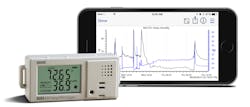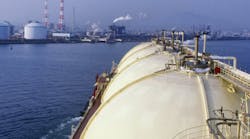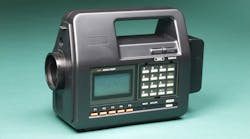Environment can impact differential measures and calibration. A user manually calibrates a CO2 data logger outdoors using exterior CO2 concentration as a baseline. At present, most loggers adopt 400 ppm as the outdoor reference concentration.
However, diurnal and monthly variations of 50 to over 200 ppm in urban CO2 concentration can cause potential calibration errors depending on the time of day the initial calibration occurs. Thus, reliance on manual calibration alone may not always lead to the most accurate absolute CO2 measurements.
Automatic mode
The automatic baseline calibration method assumes that, during a given 7.5- to 8-day stretch, at times few people or no one is in a facility, so the internal levels will return to equilibrium with outdoor concentrations approximating 400 ppm. Upon detecting minimum levels, the logger computes a new baseline assuming minimum value without occupants is 400 ppm.
This iterative method works well where occupancy approaches zero overnight, on weekends or holidays. Pre-programmed air purges during periods of non-occupancy also help reduce residual CO2 to ensure that interior levels approximate outdoor levels. Automatic calibration is not suitable in a space subjected to continuous presence of personnel.
Gas pressure declines exponentially versus elevation. That means fewer CO2 molecules enter the sensor chamber at higher altitudes, despite the relatively constant 400 ppm CO2-concentration ratio in the troposphere. Failure to set the correct elevation could result in CO2-concentration errors of up to 50 percent or more. Note that altitude compensation is a more coarse correction and does not compensate for dynamic fluctuations in ambient pressure that change rapidly.
Measuring differentials
A differential measurement setup with two or more CO2 loggers can reduce the impact of calibration errors. Differential measurements are also the best indicator of ventilation performance and additive CO2 from internal sources. One logger remains outdoors in an area suitably protected, including from direct solar radiation, and with free airflow. The remaining loggers stay indoors.
By subtracting time-stamped outdoor readings from inside readings, common-mode calibration errors largely cancel. This assumes that the initial manual calibrations were performed concurrently in the same outdoor location. During the initial calibration process but prior to final placement, all loggers should stabilize outdoors for at least 30 to 60 minutes. Next, initialize the manual calibration procedure on each logger. All loggers should read approximately 400 ppm in the same outdoor location.
Greg Lowitz is the founder and CEO of Buildera, a global provider of structural forensics systems, environmental data logging, and product evaluation services for professionals and property owners. He holds bachelor’s and master’s degrees in electrical engineering from Stanford University.
Based on Cape Cod, Massachusetts, Onset designs and manufactures its HOBO data loggers on site. HOBO data logger products are used around the world in a range of monitoring applications, from verifying the performance of green buildings and renewable energy systems to agricultural and coastal research.


